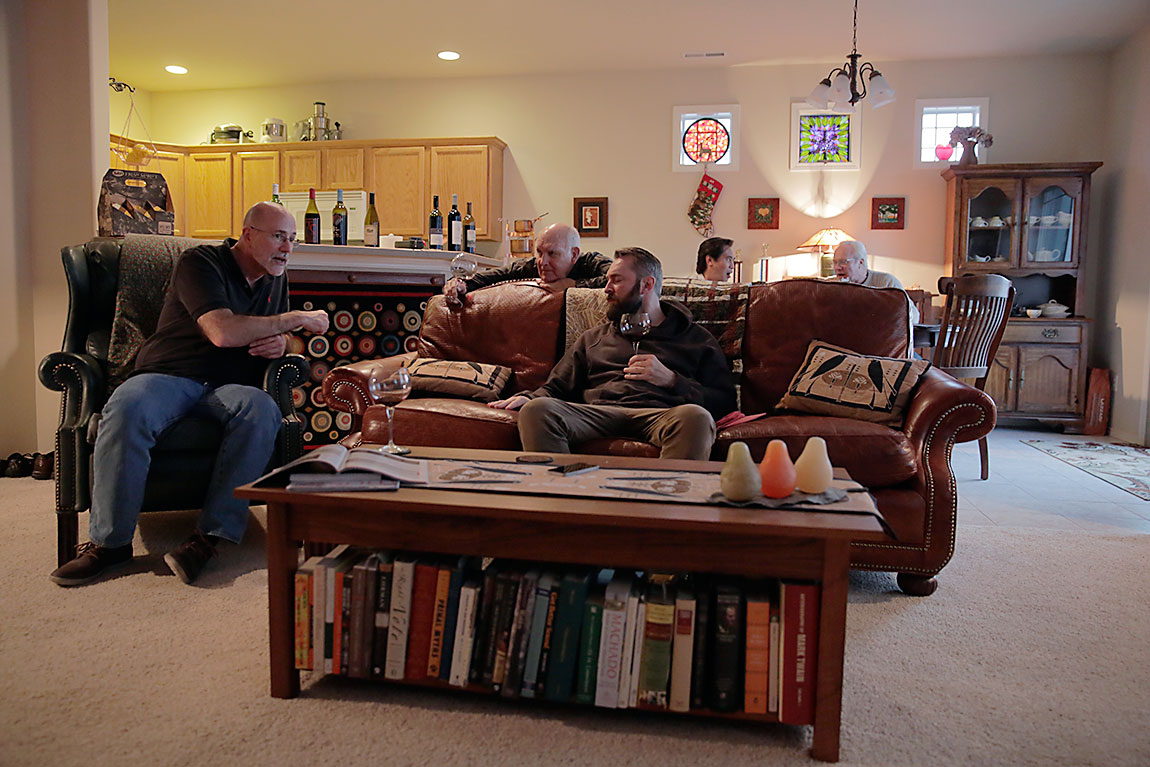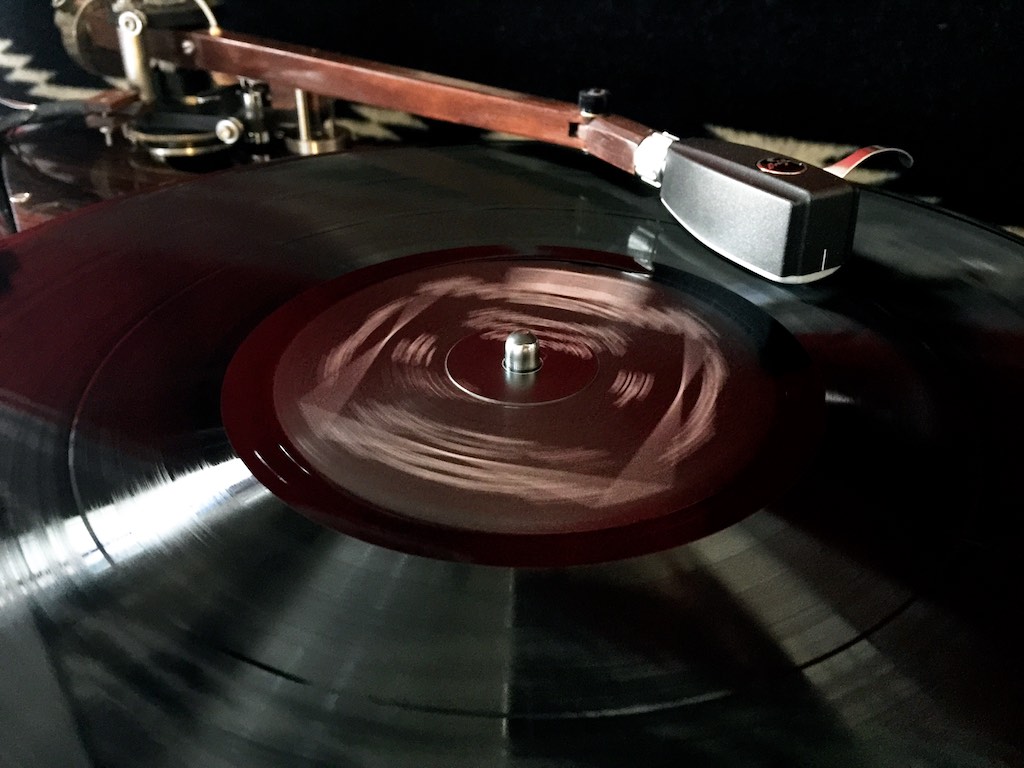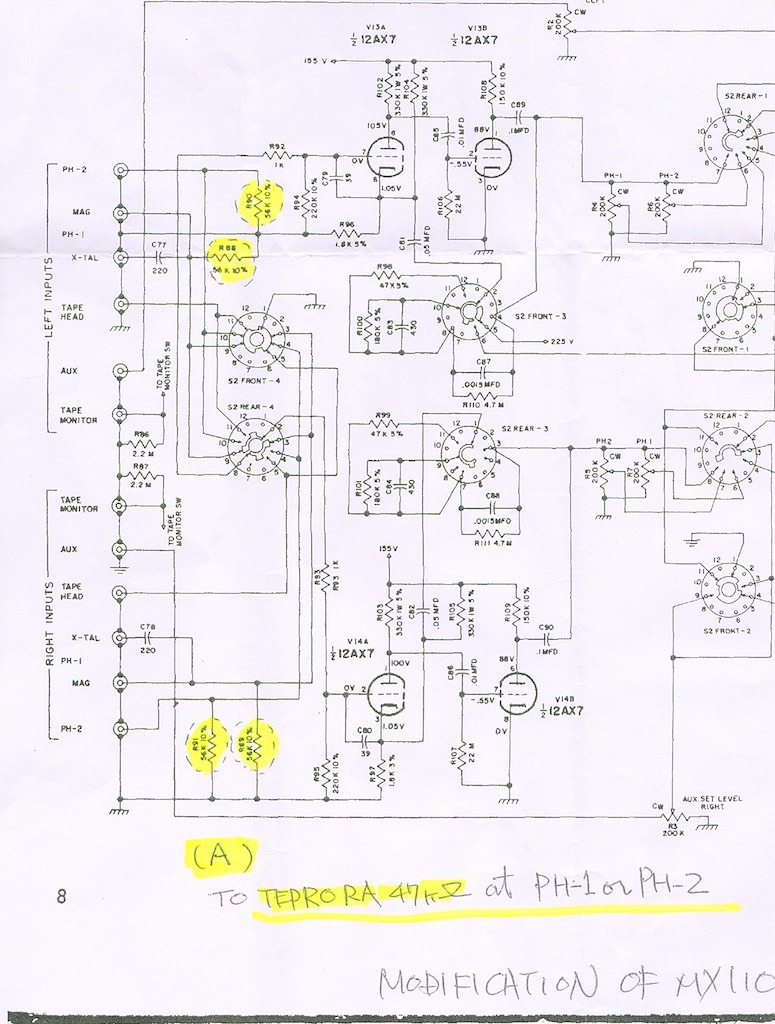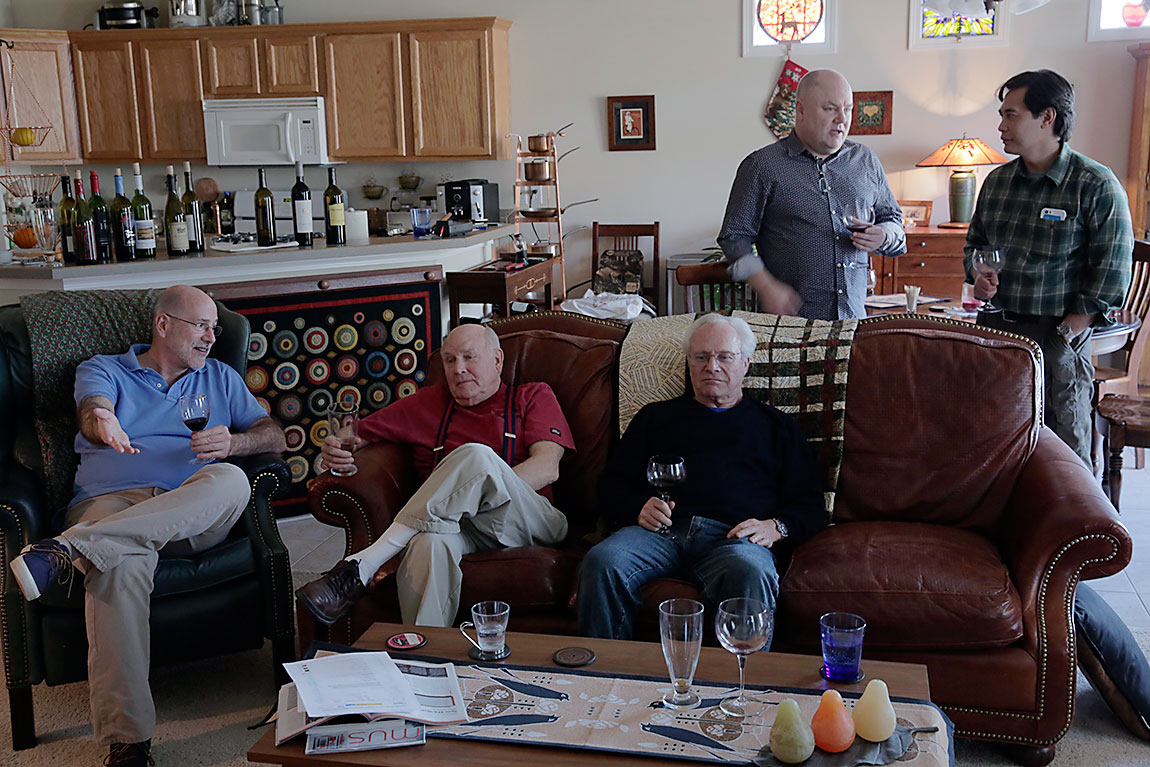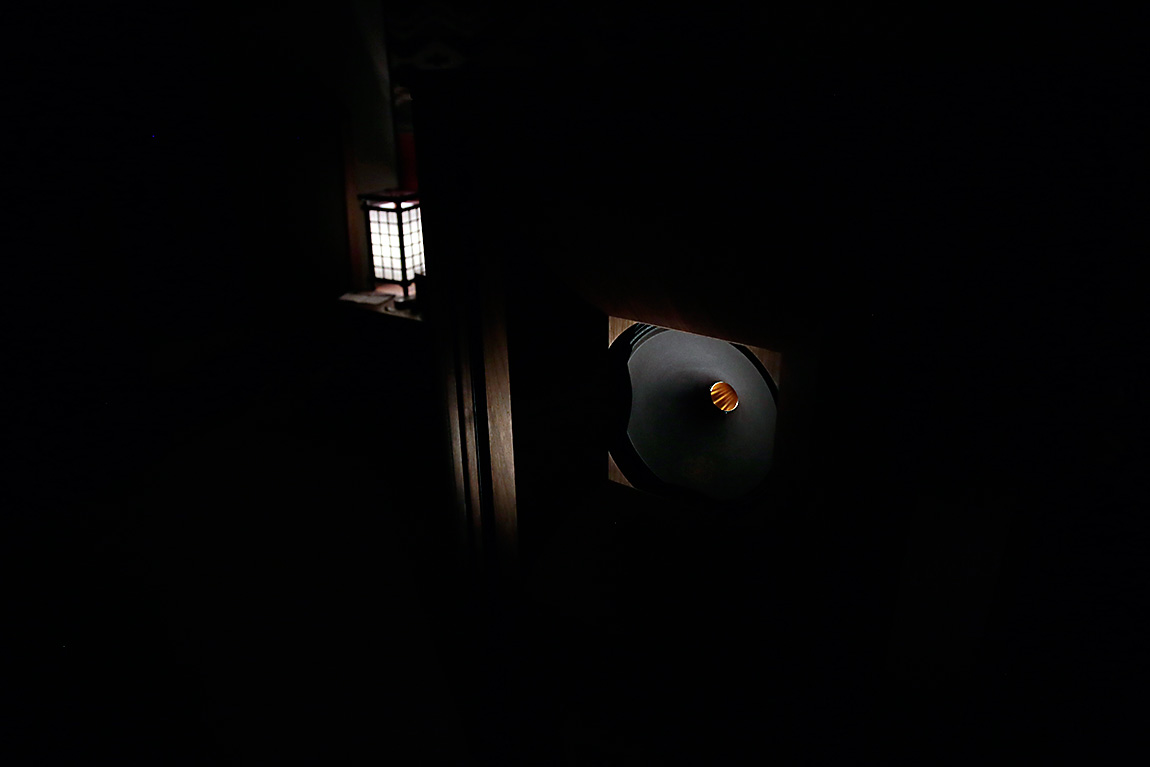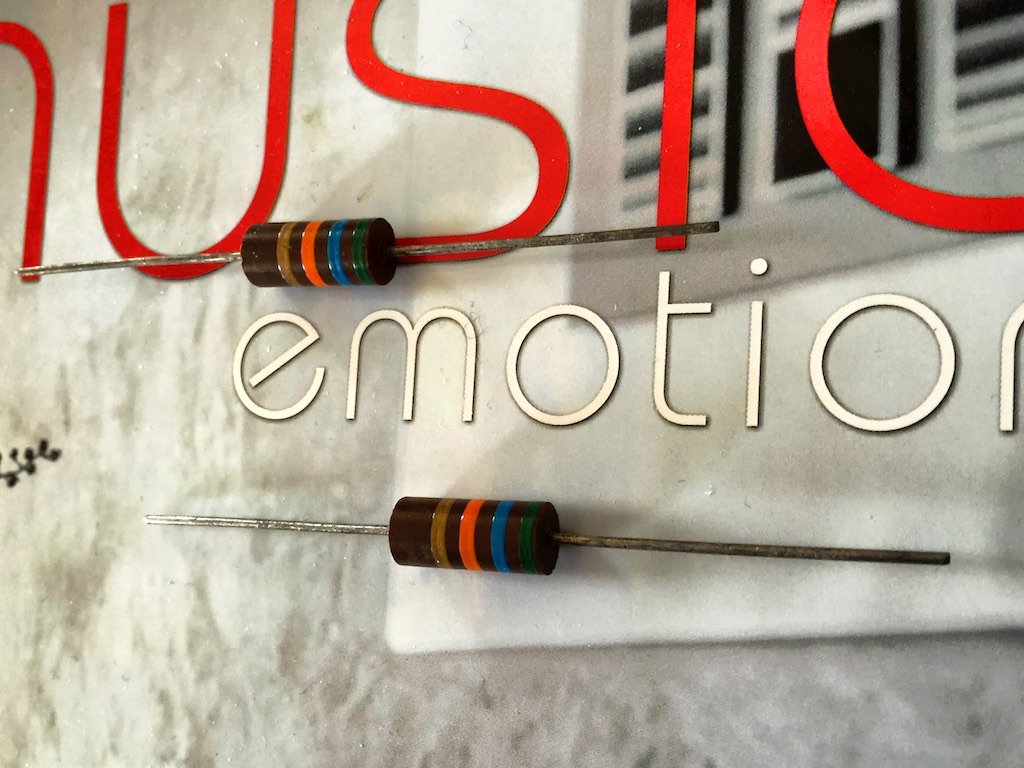It was a lot of fun to have Rafe (Part-Time Audiophile) and Don visit Jeff's Place over the weekend, and we covered a lot of ground musically, sonically, and philosophically.
From a musical perspective we did a little bit of a survey of the recording arts, starting with some very early mono recordings, progressing through the mono era, then into the early stereo era, and finally to modern recordings.
Now for a little bit of philosophizing about one of our topics of discussion, mono records. It's amazing to me how musical some of those early mono records are, and how good they sound.
A lot of music lovers haven't heard mono at its considerable best, that is, played back using a mono phono cartridge. I think everyone at my Jeff's Place gathering were marveling at how good those vintage mono records sounded using the rather modestly priced Ortofon mono CG 25 Di MkII phono cartridge doing the playback.

Thomas Schick tonearm with Ortofon SPU Mono CG 25 Di MkII phono cartridge playing Elle & Louis in mono.
The CG 25 Di MkII is a moving coil cartridge with a spherical stylus profile, with a 1.5mV output, meaning it has enough gain that I can run it straight into my vintage McIntosh MX110Z tuner-preamplifier's phono inputs, without having to use a step-up transformer (a general pain in the behind), which I don't like to do unless I have to.
In the modern era, the recording process can be highly manipulated from start to finish, and to do that the music is often recorded in pieces - even in different locations - which are then assembled into a whole to represent a musical performance.
It's kind similar to the way you can take multiple photos with a modern digital camera, with each photo focusing on a different element in a scene to optimize it, and then using a post processing tool like HDR Efex Pro to combine all those photos into one photo, emphasizing the best image elements from each photo. This technique can produce rather amazing and beautiful photographs.
Contrast that to the vintage Group f/64 photos immortalized in black & white film by such greats as Ansel Adams, who used big f's and long exposures for sharp focus in their masterpieces of the natural world. The Group f/64 photos were largely a reaction to the pictorialism movement in photography, where a photographer manipulated a normal photograph to 'create' an image rather than simply recording it, as with the modern digital HDR approach.
I suppose one could draw an analogy between photography & the recording arts, where mono records were more like the purist approach of Group f/64, and modern digital recordings are more like the pictorialism approach.
You might be expecting me to say one approach was better than the other, but that's not the case. Neither represent nature in an real way, rather they both represent the essence of the beauty of the natural world in a stylized way, and in that way they are both art and beautiful.
It is that way with music also, and my experience is that mono & stereo are most often at their best when enjoyed with their matching mono and stereo phono cartridges, respectively.
I'm actually tempted to set up on true mono system, with a mono source, mono amplifier, and a single speaker. I'll bet it would be great on mono recordings! But for now, mono and stereo phono cartridges will do as I continue to learn more about mono playback.
Both mono & stereo recordings are a form of art, that can best be enjoyed with a matching mono or stereo phono cartridges, but the tonearm is also an important consideration.
For example, I have found the Thomas Schick tonearm to be a superb match with my Ortofon mono cartridge (above), getting the very best out of it.
However, on the other hand, when it comes to my Ortofon stereo cartridge, the Woody SPU tonearm absolutely creams the Schick. It's not even close, with Woody Power the music on an LP is propelled from merely high-fidelity to Real Sound. The difference is staggering.
While Rafe & Don were visiting Jeff's Place I demoed the Woody SPU tonearm for them with my Ortofon SPU stereo cartridge, as I wanted them to be able to hear first-hand what the Woody SPU could do in a really good system.
First I played a lot of music with the Schick & Ortofon SPU stereo combo, then I switched out the Schick and replaced it with the Woody SPU and started back up the music.
There was a lot of laughing & talking going on as I made the switch, but as the music started playing, suddenly the room went dead quiet, except for a few "Holy Shit!" utterances.
The Woody SPU with my Ortofon SPU Classic GM MkII phono cartridge is a freaky-good combination, and I think everyone present was astonished at the transformation.
Another thing we did for fun during Rafe & Don's visit was to listen to Modification A (above) for the resistor adventure with my vintage McIntosh MX110 tuner-preamplifier.
I made Rafe & Don earn their keep at Jeff's Place and pressed their ears into service for some listening tests I hadn't been able to do yet.
Yazaki-san, Ron-san, and I are making progress on the MX110 resistor front, but we're not quite there yet, as applying the normally impressive selection of hot-rod modifications to the MX110 has not yielded the expected results, and we're working through each step to optimize it and figure out where we went astray.
Just based on past experience with my WRSEs I'd say they are performing about 85% of what they are capable of musically & sonically. I was actually a little hesitant to have visitors hear the system until we got things sorted out with the MX110, but I threw caution to the wind and had invited Rafe & Don anyways, and considered it an opportunity to do a mini resistor adventure while they were here.
As a refresher, in Modification A we replaced the 56KΩ phono input resistors at R88 & R90 and R89 & R91 for phono inputs 1 & 2, as it is these resisters that are mainly responsible for the phono stage’s ultimate sound quality.

The big 56K 2W Allen Bradley resistors (right middle), and the small Vishay 'naked ladies' to their left.
For our listening session we used a pair of NOS Allen Bradley 56K Ohm 2W carbon comp resistors on phono input 2, and 56K Ohm Vishay VAR-Series ”naked ladies” z-foil resistors on phono input 1 (above).
First we listened to a selection of mono and stereo records on phono input 1 ('naked ladies'), and phono input 2 (Allen Bradley), respectively, to get a feel for the level of sound quality & musicality.
Then we focused in and listened to my stereo setup on both input 1 & 2, and the mono setup on input 1 & 2. From the perspective of a balanced combination of musicality and sound quality, the Allen Bradley carbon comps resistors were the unanimous favorites with listeners during the demo.
I thought the 'naked ladies' sounded very good too, and better in some ways than the Allen Bradley resistors, (i.e. a bit smoother sounding), but just not as good as the Allen Bradley carbon comp's overall. They both deserve more listening though.
Seems like McIntosh nailed it when they chose the Allen Bradley carbon comp resistors for OEM use, and we haven't yet been able to significantly improve upon their original choice with modern resistors.
We still have one more resistor trial to do for Modification A, a comparison of Allen Bradley carbon comp to NOS 56K Ohm 1/2 watt Shinkoh tantalum resistors, as used on the original Kondo Ongaku amplifier. Ron is doing the mod's to Leo's MX110 as we speak, so that should be an interesting comparison.
After we do that, we'll go back to the stock 220kΩ Allen Bradley resistors located at R94 & R95, and take out the 1MΩ Roederstein resistors we tried there, to see if that has a beneficial effect.
As Ron put it, as far as our MX110 resistor adventure goes with Modification A, we are moving forward sonically & musically by going back to the OEM McIntosh choices of Allen Bradley carbon comp resistors.
We're both convinced that the Arizona Capacitors are a big step up in performance, and as soon as we finalize our resistor selections, then we'll move on to optimizing which Arizona Capacitors to use in various positions in the MX110.
What a grand adventure this has turned into!
As always, thanks for stopping by Jeff's Place, and from my home to yours, may the music playing make you happy!




